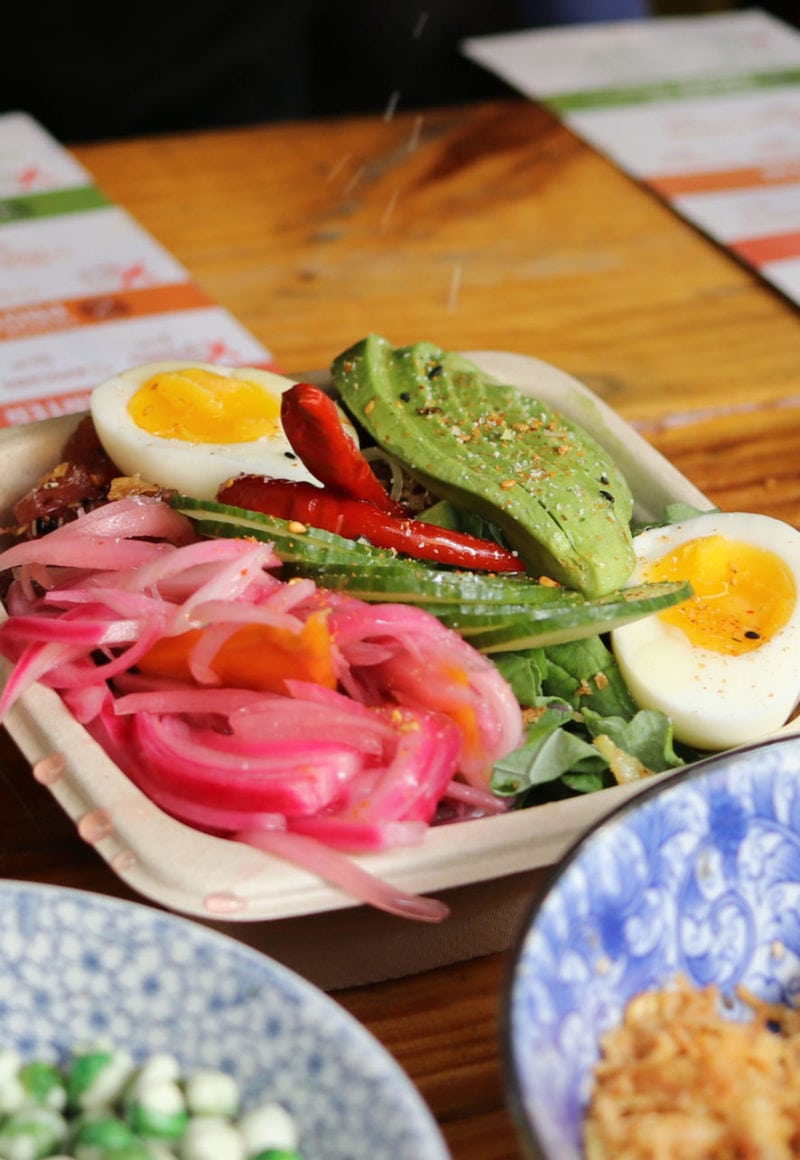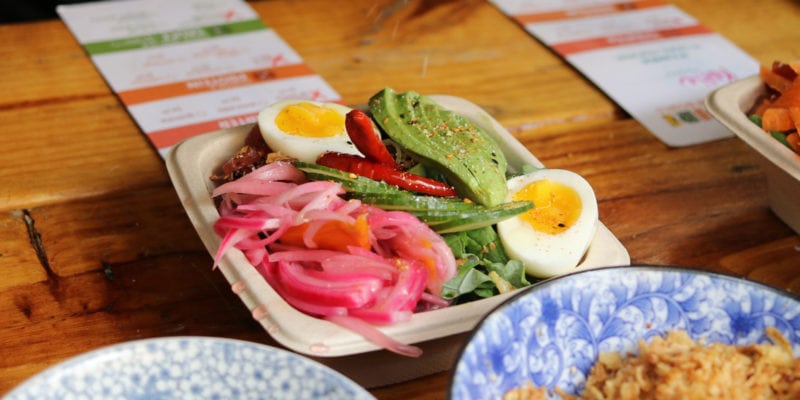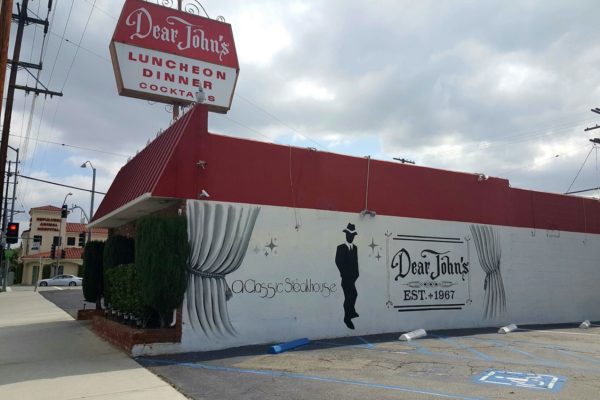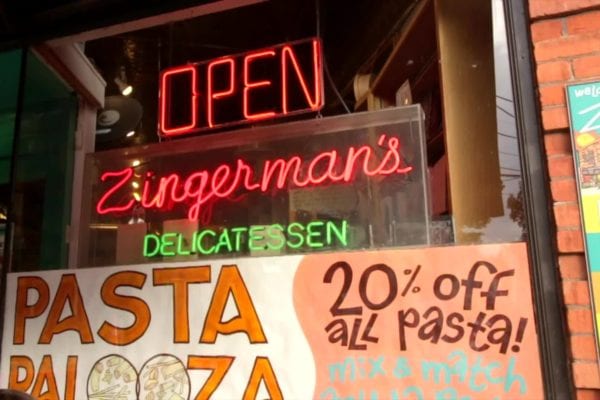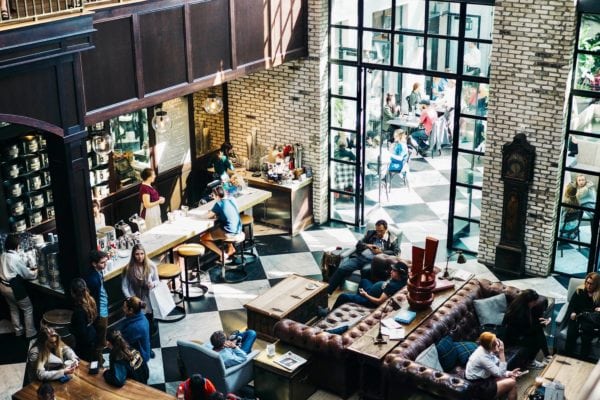Skift Take
In the year after Maria, restaurateurs are building new relationships with local farmers and seeing more interest from customers in supporting local agriculture and celebrating food that is grown entirely on the island.
— Erika Adams
When El Jangiri opened on December 24, 2017 in San Juan, Puerto Rico, owners Natalia Rivera and Luis Castillo did not expect the poké bowl shop to be an immediate success.
As far as restaurants go, it was a pretty low-risk bet. The shop was located inside Lote 23, an 18-month-old food hall-style collection of stalls and Airstream trailers operated by chefs who champion hyperlocal concepts. There was a gym right across the street, attracting the type of customers who would support El Jangiri.
However, as Rivera explained, the seasonal, vegetable-heavy menu was far from the typical Puerto Rican diet of rice and beans. The married business partners were also opening up shop barely three months after Hurricanes Irma and Maria had ripped through the island. Electricity was just coming back to more densely populated areas; residents were barely getting back on their feet.
“We were very insecure about what we were doing,” Rivera admitted. The couple also owns the year-old dessert stall next door, La Postrería, and knew first-hand how hard sourcing ingredients had been after the storm.
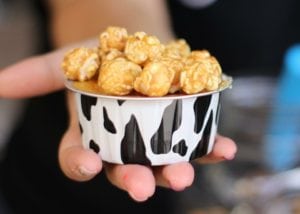
La Postrería is known for inventive pastry that showcases local ingredients like pumpkin, corn, passion fruit, and pineapple. It shut down for two months after Maria hit, and when the shop finally did reopen, the menu was a shadow of its former self.
“Whatever we could get, we made into a dessert,” Rivera said. “All of the freshness we used to have, we lost that. We ended up making brownies and cakes and cookies n’ cream.” Picking up staples like heavy cream and sugar at Costco required waiting in line for hours. Food costs skyrocketed. Eggs tripled in price (and have yet to come down).
“We just wanted to feed people, but everything we were buying was so expensive,” Rivera said. “It was so crazy.”
“We were pricing our menu so that we were not losing money, but we were not making any money,” Castillo added.
New Openings
And yet, the couple still decided to take a chance on El Jangiri. The build-your-own bowls prioritized high-quality fish and vegetables and sold for an average of $10 apiece. From day one, Rivera and Castillo couldn’t make them fast enough.
“What happened was that we were eating canned and frozen food for a month or two months after the storm,” Rivera said. “I learned that we are all looking for fresh food and fresh produce. I think it is a movement now on the island.”
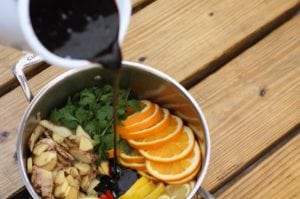
Rivera and Castillo bought whatever produce farmers who dropped by had available to sell. If there was too much of one item, or if it wasn’t at the height of its season, they pickled or made kimchi out of the vegetables rather than choosing not to buy. Anything to start moving the economy of the farmer, Castillo explained. Sixty to 70 percent of the vegetables on El Jangiri’s menu are local, and they expect that number to rise as more crops like avocados and plantains continue to recover.
“It’s more soul than even the soul food,” Castillo said of the new interest in eating fresh, local produce. “It’s giving you nature when you need more of that. The hurricane was more of an awakening. Something happened that changed people’s minds. People eat better, and take more care now.”
The Effect of Imported Food
Local vegetables aren’t traditionally an easy sell on a Puerto Rican menu. The vast majority of Puerto Rico’s food is imported — 85 percent before Maria, and up to 95 percent in the months after the storm, as the current Secretary of Agriculture of Puerto Rico told Eater late last year.
Sugar cane and coffee, two crops with deep roots in Puerto Rico’s scarred history as a Spanish colony, were historically viewed as some of the most valuable crops to be grown and exported. The island was not seen as a rich agricultural source by its own residents. “[Farmers] were taught to produce what they don’t consume, and they were taught not to produce what they consume,” Javier Rivera Aquino, Puerto Rico’s former secretary of agriculture, told NPR in May 2017. “That’s the kind of dependence that was created under that colonial system.”
The Farmer’s Perspective
For the farmers who are rethinking Puerto Rico’s agricultural landscape, it’s an uphill battle that was significantly challenged in the aftermath of Maria.
Nina Craig and her husband Jaime Jordán founded Finca El Paraíso, a 20-acre farm in Arecibo, in 2011. When Maria hit, every crop high enough off the ground to fall was toppled, including avocados, plantains, and bananas. Everything but the concrete base of Craig and Jordán’s home, where they lived with their young son, was destroyed.
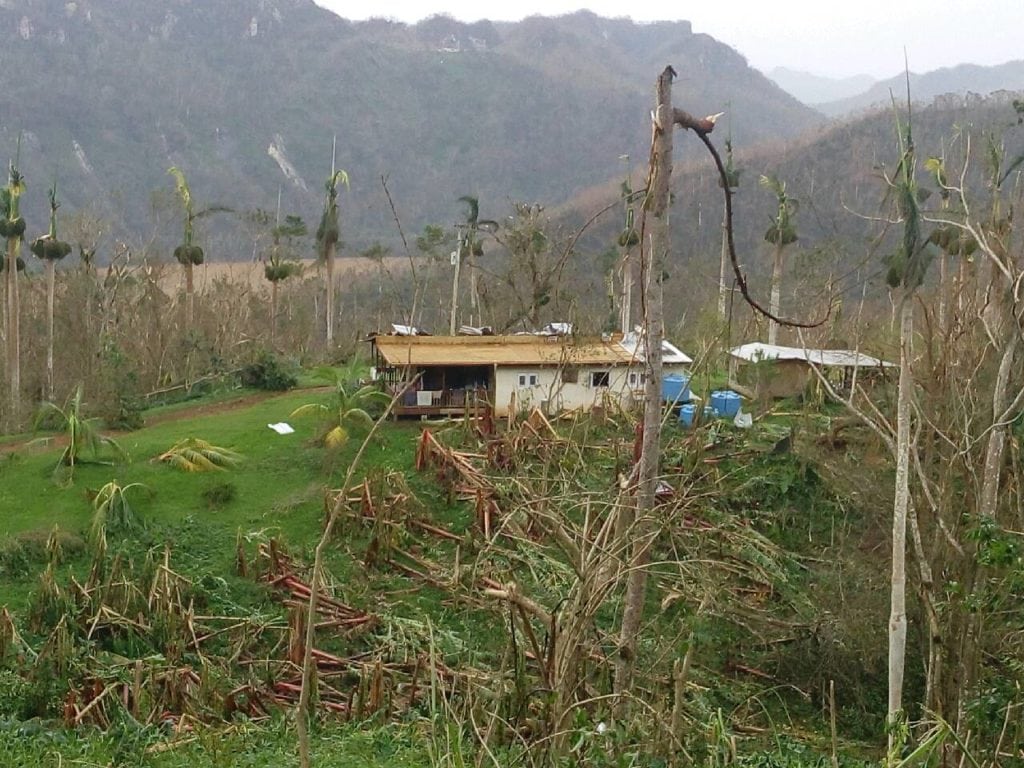
The family moved into their garage, where they lived for the following ten months while rebuilding their home. They just got access to power in April; before that, they were using a small solar panel to power a fridge, a light, and a strip of outlets for charging phones and a laptop in the garage.
Craig and Jordán got the farm up and running again as quickly as possible, which meant growing crops with a quick turnaround time like kale and collard greens. Craig gathered what she could harvest, texted her clients directly, drove up to a main junction 10 to 15 minutes away, and sold the produce out of the trunk of her car.
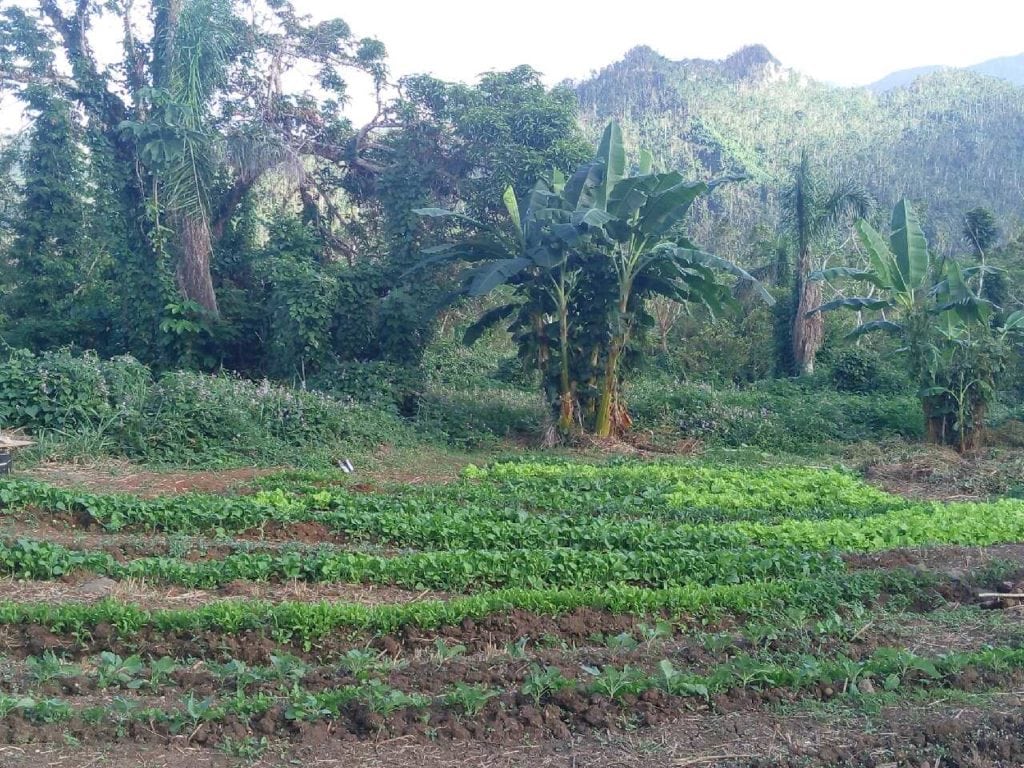
Most of the farm’s sales currently come from salad greens, which can be harvested on a weekly basis. The majority of Finca El Paraíso’s revenue comes from farmer’s market sales and direct sales to clients, which provide steadier income than restaurants. Craig estimates that the farm is doing roughly half of the business it used to and it’ll take a couple of years to fully bounce back.
Changing the Local Mindset
One of Craig’s restaurant clients is Verde Mesa, an upscale restaurant in old San Juan. Chef and co-owner Gabriel Hernandez has been working with local ingredients ever since Verde Mesa’s first iteration as a casual lunch spot in 2009.
Hernandez closed down Verde Mesa for almost two months after the storm. When he reopened in November, it was only for lunch service and the menu was structured to feature items that could be prepared using gas heat, as the restaurant still didn’t have electricity and he didn’t have the resources to pay for a generator large enough to power the restaurant. There was no air conditioning. Hernandez still does not take a paycheck from the restaurant. Verde Mesa is reopening dinner service this month, 10 months after Maria.
“From my point of view, I have a restaurant that is still recuperating,” Hernandez said, explaining how he is sourcing ingredients now. “If I am going to spend money on radishes, I cannot afford to take that radish and throw it into a stew or cut it in beautiful ribbons and put it in a salad. I have to take the whole radish and make a dish out of it.”
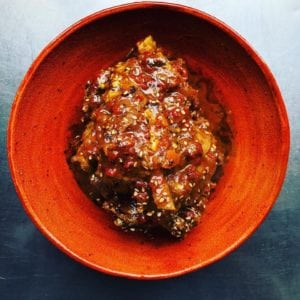
Selling that radish dish, however, is not always easy. These aren’t $10 poké bowls, these are fine-dining plates that are priced accordingly. Hernandez is well aware that in top restaurants around the world, vegetables have been fully embraced within fine dining. But, in Puerto Rico, “we are just catching up on that collective culinary consciousness.”
The reasons for that, again, dig into Puerto Rico’s painful history. “We have been conditioned to not grow our own things. We are conditioned to believe we cannot do it. We are conditioned to believe that outside produce is better. We are accustomed to cooking everything from canned food. We are a colony,” Hernandez said.
Looking forward, Hernandez hopes to grow awareness for the restaurant among tourists and locals alike via public events and educating customers on the restaurant’s culinary identification. He’s confident in the potential of Verde Mesa’s success — Hernandez received his first James Beard nomination this year — but there’s still work to be done to get there. “The restaurant can make it, it really is a little gem,” Hernandez smiled. “It just needs that extra push, that extra energy.”
Building A Better Supply Chain
At 1919, a fine dining restaurant located inside the Condado Vanderbilt luxury hotel in the tourist-friendly Condado neighborhood of San Juan, executive chef Juan Jose Cuevas has been working hard to champion local produce and help support other chefs with the same mindset on the island. His resume includes prominent stints working under Alain Ducasse and Dan Barber, and when the Condado Vanderbilt sought him out for the top position at 1919, Cuevas was adamant that he’d only sign on if he was able to source a menu with a hyperlocal sensibility in Puerto Rico.
The hotel provides a lot of infrastructure for 1919’s success. The Condado Vanderbilt has a historic reputation as a luxury destination on the island, and attracts a lot of tourists who are more likely to be open to the menu and the price point. In the wake of Maria, the hotel only shut down for 10 hours. 1919 did not reopen immediately but Cuevas and his team used the kitchens to provide meals to those who needed food.
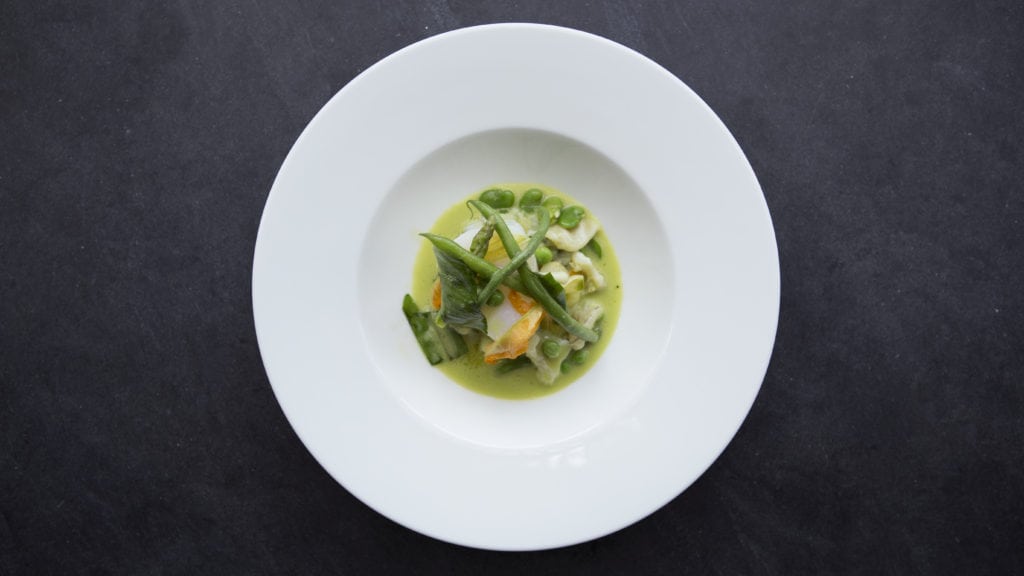
As 1919 returned to its regular operations, Cuevas saw a renewed sense of energy and openness among the farmers he works with. They were more open to growing, or at least considering to grow, the vegetables that Cuevas wanted to use in his dishes. Because so many of the old crops had been destroyed, the farmers were starting with a largely blank slate and were more receptive to growing what Cuevas was asking for.
“The list of ingredients that I am getting now is a lot better,” Cuevas explained in Skift Table’s video interview with the chef. “I hope this doesn’t sound wrong, but when you’re in your comfort zone, why change? If it’s not broken, why fix it? When all of a sudden it’s broken and you have to fix it, you listen to different possibilities for doing things.”
Those conversations are a two-way street, of course. In return, Cuevas commits to paying his farmers promptly regardless of whether the crop turns out exactly as planned. “If I tell you to grow something and 1919 cannot consume enough, the hotel will buy it. That’s a promise,” Cuevas said. “Six years and I haven’t broken that promise.”
The landscape of eating local food and supporting local agriculture has changed drastically since Cuevas first took over at 1919, and he’s optimistic about supporting the future of the movement. “You have to decide who’s the backbone of your business,” he explained. “I need my customers, but to be able to please my customers, I need my farmers because that’s the way I think about how to nourish my guests. That’s extremely important for me.”

